VBOX Speed Sensors
With update rates of 25 Hz and 100 Hz, VBOX Speed Sensors provide a high accuracy speed signal to augment your testing setup.
High accuracy GNSS receiver
Brake trigger input
User configurable digital outputs
CAN Bus output
ISO/IEC: 17025:2017 calibrated
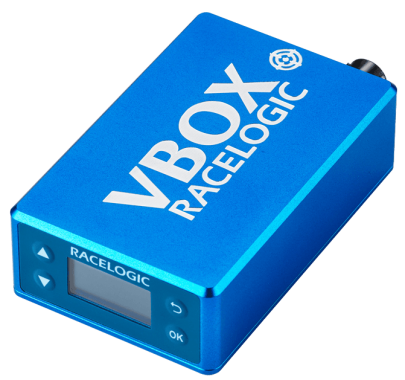
Key Features

Multi-GNSS
Using high accuracy multi-constellation GNSS receivers, the speed sensors track GLONASS, Galileo and/or BeiDou satellites in addition to GPS, which improves the quality of measurements in areas of poor satellite visibility.

RS232 Serial Output
Selectable RS232 modes that include NMEA output of speed, position and time, or connection to VBOX Test Suite.
CAN Bus Output
Data output is via CAN Bus, offering easy integration with data loggers and testing applications. Available channels are position, velocity, distance, time, heading, height, vertical velocity, lat/long acceleration, trigger to zero distance, trigger time, trigger speed, and radius of turn.

Live Data Monitoring
When connected to a laptop or PC (via serial) that runs our free VBOX Test Suite analysis software, you can monitor the test data from your vehicle, in real-time.
Digital Output

OLED display
To facilitate unit configuration, the VBOX Speed Sensor has an OLED display and four membrane buttons on the front panel.

Dust & Waterproof
The aluminium enclosure is IP 67 rated, meaning it is protected against dust and water, and can be used in harsh environments.

ISO17025 calibrated
All speed sensors are shipping with an ISO/IEC: 17025:2017 calibration certificate and can be calibration in-house.
Which Speed Sensor is right for you?
Whether you're conducting brake testing, performance assessments, or lap timing, our Speed Sensors are the ultimate choice for non-contact measurement. Operating within a broad voltage range of 7 V to 30 V whilst consuming low current, they are a perfect fit for automotive testing, motorsport endeavors, marine applications, and telematics solutions.
Measuring a mere 9-14 cm in length and housed in a rugged, water-resistant enclosure, our units are incredibly easy to install and transport. You have a choice of two variants, depending on the update rate and accuracy you require.
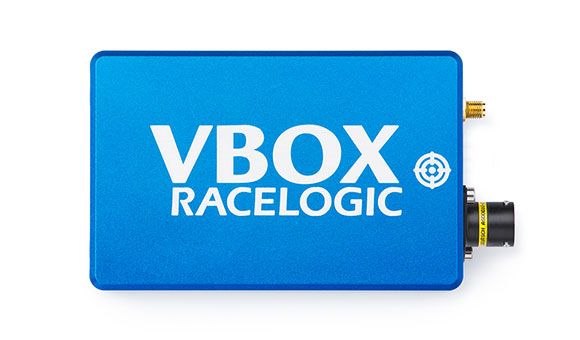
VBOX 25 Hz Speed Sensor
25 Hz GNSS receiver
CAN Bus Output
RS232 for NMEA output or connection to VBOX Test Suite
User configurable digital output (Virtual Lap Beacon or Speed)
IP67 rated enclosure: water + dustproof
ISO/IEC: 17025:2017 calibrated
User-friendly OLED display
± 10 cm Brake distance accuracy (Trigger)
1.3 m position accuracy (with SBAS)
Small (140 x 79 x 38 mm) & rugged

VBOX 100 Hz Speed Sensor (V5)
100 Hz Dual-band GNSS receiver
CAN Bus/ Ethernet output
RS232 for NMEA output or connection to VBOX Test Suite
User configurable digital output (Virtual Lap Beacon or Speed)
IP67 rated enclosure: water + dustproof.
ISO/IEC: 17025:2017 calibrated
User-friendly OLED display
± 1.8 cm Brake distance accuracy (Trigger)
<1 cm position accuracy with RTK
Small (140 x 79 x 38 mm) & rugged
Is your test track lined with trees, featuring bridges or tunnels? Are you testing on public roads with obstacles obstructing direct satellite visibility?
VBOX 3iS, our speed sensor with inertial and wheel speed integration, significantly improves the accuracy of the speed and position data by combining wheel speed information from the vehicle’s CAN bus with GNSS and inertial data. In areas where there is no view of the sky at all, inertial sensors and wheel speeds can fill in the gaps for periods of up to five minutes. Additionally, the internal, high-grade IMU offers precise measurements of pitch, roll and yaw.
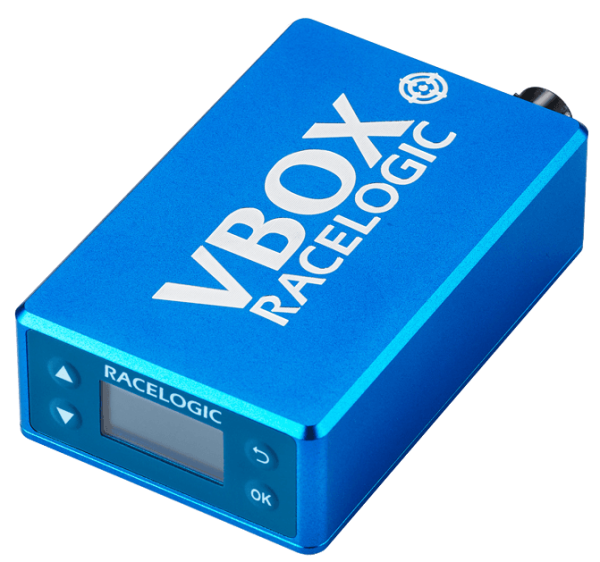
VBOX 3iS / 3iSDR
100 Hz GPS/GLONASS receiver
Inertial & CAN bus wheel speed data integration
Pitch and roll angles with IMU integration
IP67 rated enclosure: water + dustproof.
ISO/IEC: 17025:2017 calibrated
± 1.8 cm Brake distance accuracy (Trigger-activated)
RS232/ CAN bus/ Ethernet
50 cm using DGNSS or ±1 cm position accuracy with RTK
Motion Pack for driving robots & guided soft targets (GST) - 3iSDR only
Parameters
VBOX Speed Sensor measures the following parameters at 25 or 100 samples per second.
- Time
- Position
- Velocity
- Vertical Velocity
- Height
- Heading
- Longitudinal acceleration
- Lateral acceleration
- Trigger to zero distance
- Trigger time
- Trigger speed
- Radius of Turn
Add-Ons and Accessories
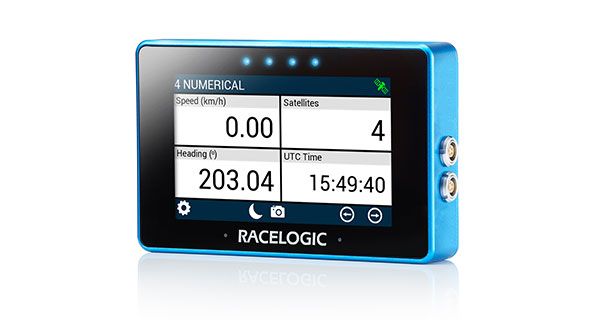
Multi-Function Touch Display
The MFD Touch is the perfect accessory to monitor one or more parameters during the test. Up to six GNSS/CAN-derived data parameters can be displayed simultaneously, and performance test results can be calculated and presented live from the vehicle.
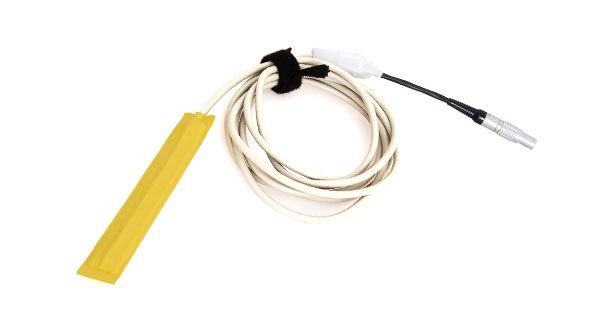
Brake Pedal Trigger
The VBOX Brake Pedal Trigger (RLVBACS004) allows precise measurement of brake pedal application during braking. The exact time is captured and recorded by the VBOX at a high sampling rate.
Technical Specifications
Velocity (25 Hz)
- Accuracy
- 0.1 km/h
(averaged over 4 samples) - Units
- km/h, mph, knots
- Maximum velocity
- 1600 km/h
- Minimum velocity
- 0.1 km/h
- Resolution
- 0.01 km/h
- Latency
- 58 ms
Velocity
- Accuracy
- 0.1 km/h
(averaged over 4 samples) - Units
- km/h, mph, knots
- Maximum velocity
- 1900 km/h
- Minimum velocity
- 0.1 km/h
- Resolution
- 0.01 km/h
- Latency
- 20 ms
Acceleration
- Accuracy
- 0.50%
- Maximum
- 20 g
- Resolution
- 0.01 g
Absolute Positioning (25 Hz)
- Accuracy (Standalone)
- V: 2 m*
- Accuracy with SBAS
- V: 1.3 * m
- Resolution
- 1.85 cm
* Specifications will vary depending on the number of satellites used, obstructions, satellite geometry (PDOP), multipath effects, and atmospheric conditions. Accuracies are stated to 95% CEP, meaning that 95% of the time the position readings will fall within a circle of the stated radius.
Absolute Positioning
- Accuracy (Standalone)
- V: 1.8 m; H: 1.2 m*
- Accuracy with SBAS
- V: 1.2 m; H: 0.8 m*
- Accuracy with DGPS
- V: 0.5 m; H: 0.3 m*
- Accuracy with RTK
- V: 10 mm; H: 5mm*
- Resolution
- 1.8 cm
* Specifications will vary depending on the number of satellites used, obstructions, satellite geometry (PDOP), multipath effects, and atmospheric conditions. For maximum system accuracy, always follow best practices for GNSS data collection.
Heading
- Accuracy
- 0.1°
- Resolution
- 0.01°
Brake Distance (25 Hz)
- Accuracy
- ±10 cm
Brake Distance
- Accuracy
- ±1.8 cm
Distance
- Accuracy
- 0.05 % (<50 cm per km)
- Units
- m or ft
- Resolution
- 1 cm
More VBSS25 specifications:
More VBSS100 specifications:

